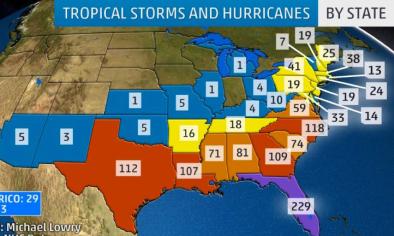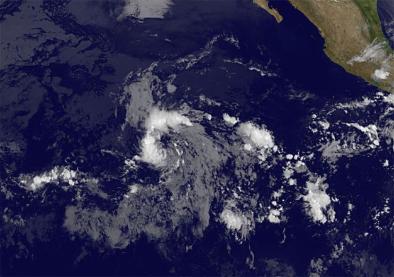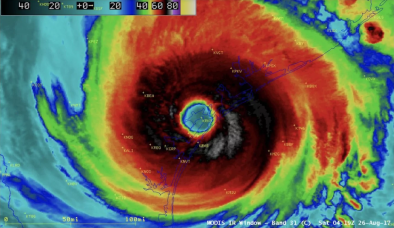Science Source
Increasing Magnitude of Hurricane Rapid Intensification in the Central and Eastern Tropical Atlantic
- Uses an analysis of observations and climate model output
- Demonstrates that:
- The magnitude of rapid intensification (RI), defined as an event where a hurricane increases in intensity by 25 knots or higher in 24 hr, increased in the central and eastern tropical Atlantic during the 30‐year satellite period of 1986–2015
- On the other hand, in the western tropical Atlantic, changes in RI magnitude are insignificant.
- Finds that conspiring changes in the large‐scale hurricane environment brought about by a positive shift in the phase of the Atlantic Multidecadal Oscillation, the dominant mode of decadal climate variability in the Atlantic, are primarily responsible for these changes in RI
- Notes that while previous studies examined the frequency of RI, our study is the first to understand potential changes in RI magnitude.
- Results have substantial implications for the eastern Caribbean Islands, some of which were ravaged by several major hurricanes undergoing RI during the recently concluded 2017 Atlantic hurricane season
Related Content
Headline

Jun 6, 2018 | Weather Underground
This Map Shows How Many Tropical Storms and Hurricanes Have Struck Each State
Headline

May 9, 2018 | Weather Underground | Category 6
An Early Start to Hurricane Season in the Eastern Pacific and Atlantic?
Headline

May 9, 2018 | Washington Post
Because of climate change, hurricanes are raining harder and may be growing stronger more quickly
Science Source
| Geophysical Research Letters
Attribution of cyclogenesis region sea surface temperature change to anthropogenic influence
N. P. Gillett, P. A. Stott, B. D. Santer


